For the Future Generation Art Prize in Kiev, Ukraine, I installed a new version of the Rainbow Plane: a 1:1 outline of an aircraft, as seen by a satellite. Watch a time-lapse video of its creation at the end of this post.
The “rainbow plane” effect, which I first came across some years ago, and spoke about in 2011, is caused by the pan-sharpening technique of satellite imagery. Rather than taking a photograph, satellite sensors record electromagnetic radiation in the red, blue, green, and high-resolution panchromatic (black-and-white) bands (as well as several not visible to the human eye, as this Mapbox post helpfully explains). When these bands are combined to produce a visible image, fast-moving objects – like planes in flight – don’t quite match up, producing the rainbow effect.
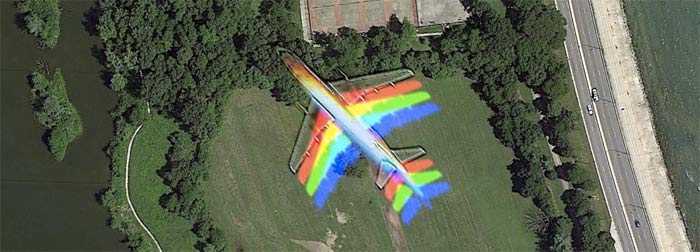
The previous Rainbow Plane was an experimental supersonic jet which never flew; this one is very real. It’s a Gulfstream V, one of a class of numerous private jets produced by the General Dynamics-owned aerospace company. (General Dynamics also built the F-16 Fighting Falcon, and founded General Atomics, which produces Predator and Reaper drones).
The Gulfstream V is one of the most popular business jets on the market, used by private individuals including Russian oligarchs and Google founders, corporations, and governments. Military variants include Israel’s fleet of G550 SEMA surveillance planes. One Gulfstream V also became notorious as the “Guantanamo Bay Express”, one of the most frequently used planes in the CIA rendition programme.
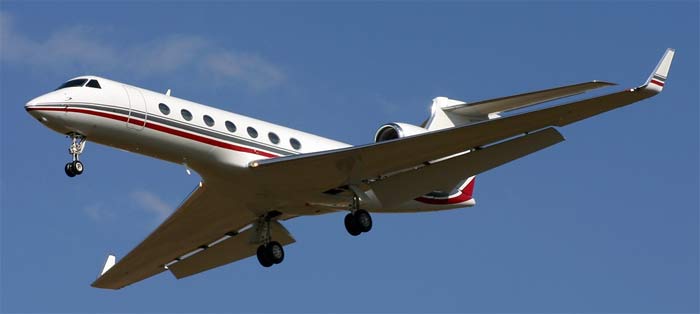
For me, the Rainbow Plane stands for the moment when we see how technology sees the world, and thus how technology both obscures and reproduces political intent. Just as private aviation is used by power to exceed and evade national and legal jurisdictions, and satellite networks are deployed to measure and surveil the globe, analogous technologies can be used to invert and render visible these relationships.
Like the appearance of secret flights on civilian radar websites, the rainbow plane is a window into the workings of private networks of transit, rendition, surveillance and governance. The rainbow plane is a true “glitch”, where we see not an error, but a glimpse of how systems really function, allowing us to better understand and act within them. An aesthetic which reveals not the surface, but the depth of things.
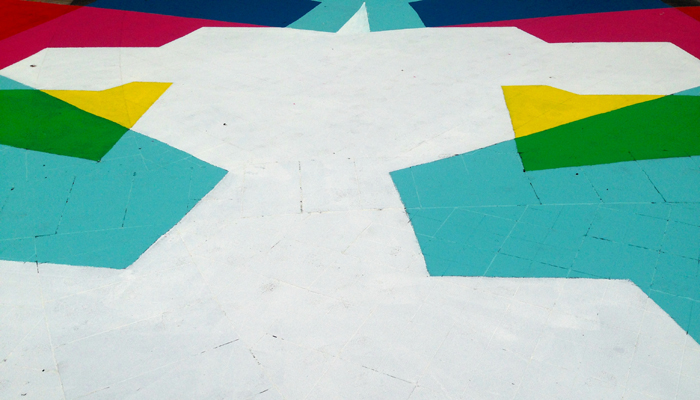
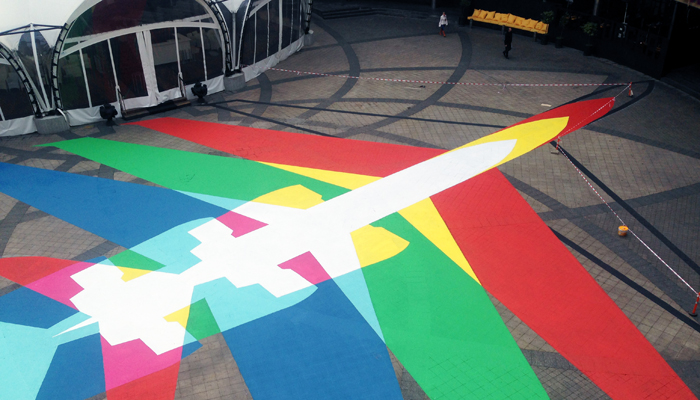
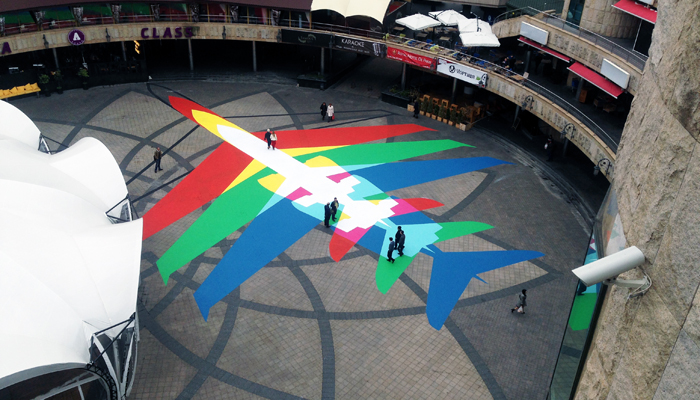
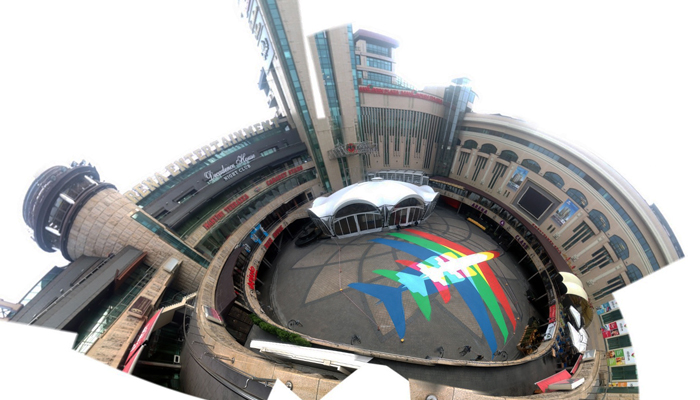
The Rainbow Plane is installed in the City Arena centre adjacent to the PinchukArtCentre in Kiev until 4 January 2015. More photographs of the installation are available at Flickr.
I’m very grateful to the PinchukArtCentre staff and everyone at the Future Generation Art Prize for the assistance and opportunity to realise this work.
Comments are closed. Feel free to email if you have something to say, or leave a trackback from your own site.